In Cedar Rapids, Iowa, on Mother’s Day 2015, Slipknot guitarists Mick Thomson and Jim Root took some time before their somewhat hometown show and hung with PG to talk about signature guitars, tube heads, and the handful off effects they need to punish arenas each night.
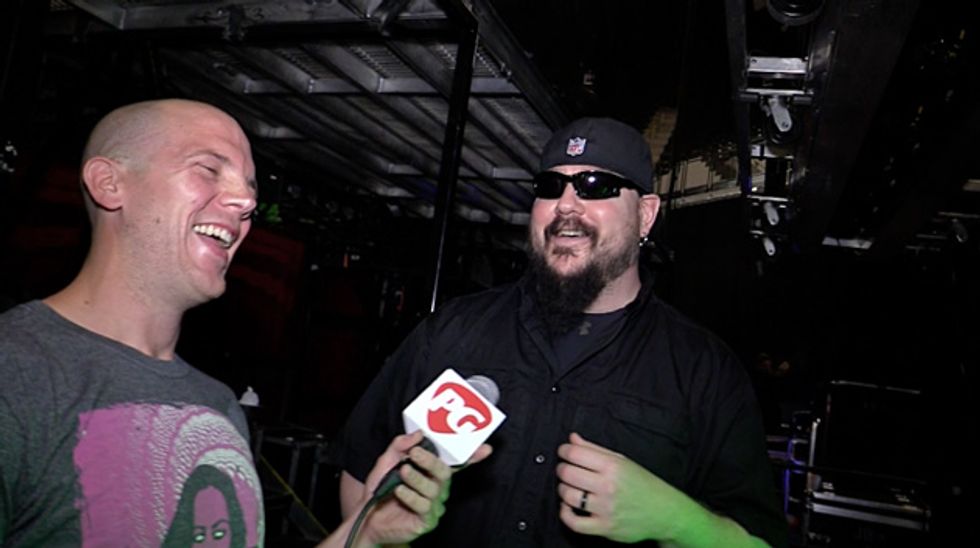
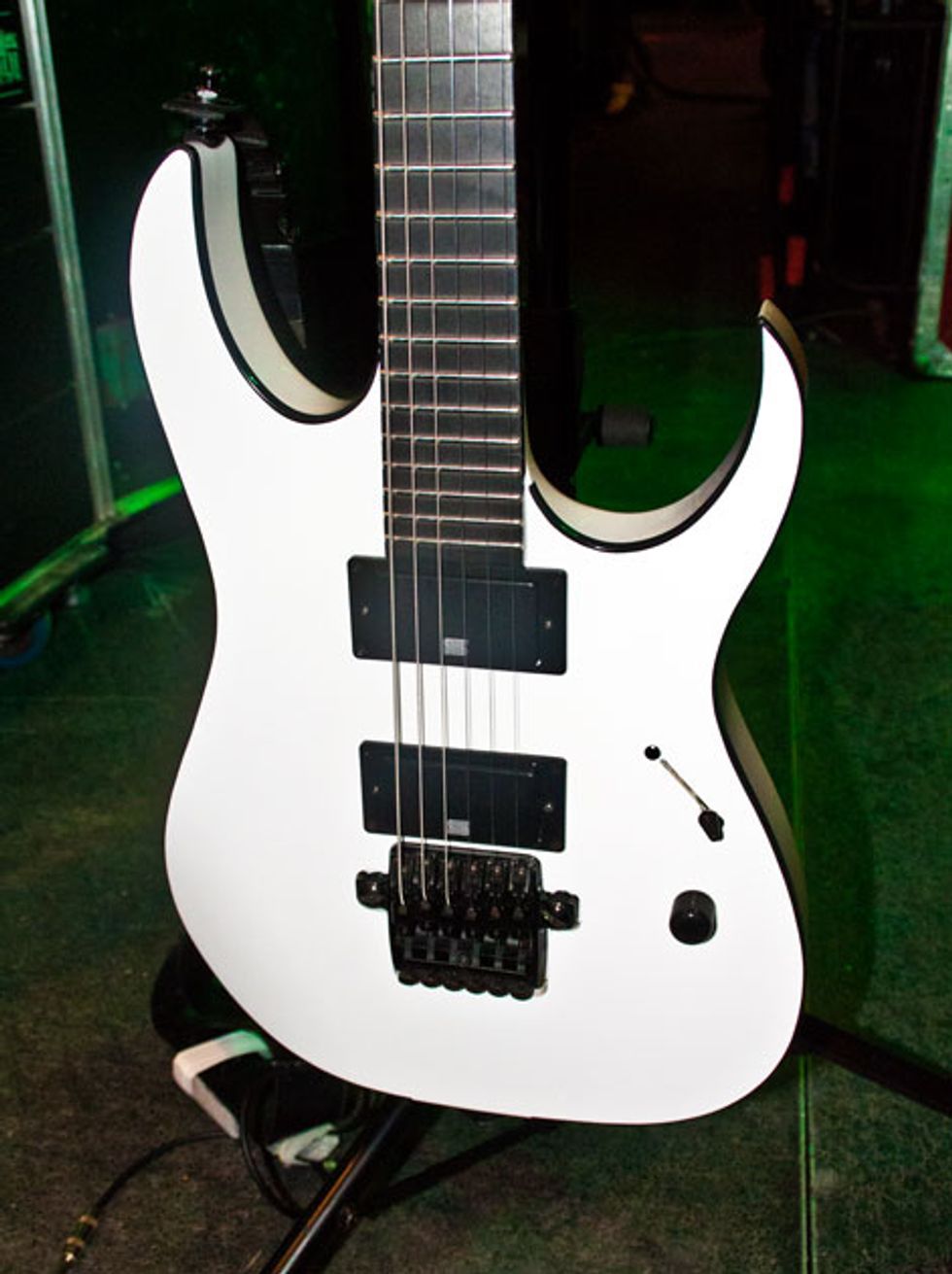
Mick Thomson is a creature of habit—give him a few of his Ibanez MTM signature guitars packed with his Seymour Duncan EMTY Blackout pickups and he’s a happy dude. Each one of his guitars features a mahogany body, maple neck, and rosewood fretboard.
As far as he’s concerned, the best guitar he has out on the road right now is his white-and-black “storm trooper” Ibanez MTM that’s kept tuned to dropped-B. According to Thomson, it’s perfect for rhythm work and can stand up against any other 6-string in his collection for leads. Nearly all of 2008’s All Hope is Gone and the bulk of the rhythm material for last year’s .5: The Gray Chapter was done with the storm trooper. For this run, the band is primarily using two tunings and he uses a different set of D’Addario EXL117 strings for each one. For dropped-A tunings, he goes with .011–.058 and for dropped-B tunings he goes with .012–.068. Thomson recently worked with Dunlop to create a custom Jazz III pick made of a graphite composite because he feels they’re slicker, harder, and doesn’t make any scraping or scratching sounds when they wear down.
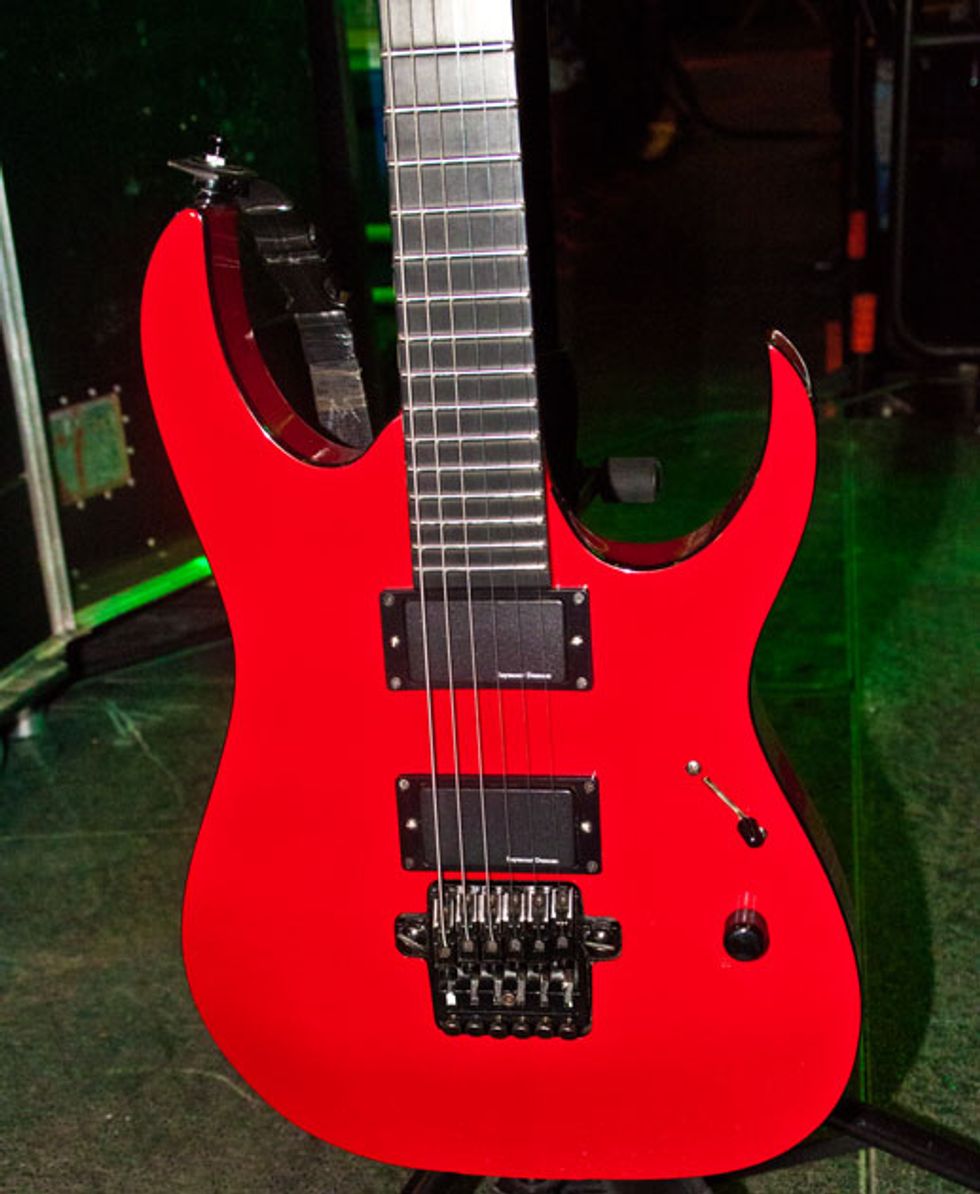
This is #7’s backup to the storm trooper—his very first prototype he got for his signature line back in the early 2000s.
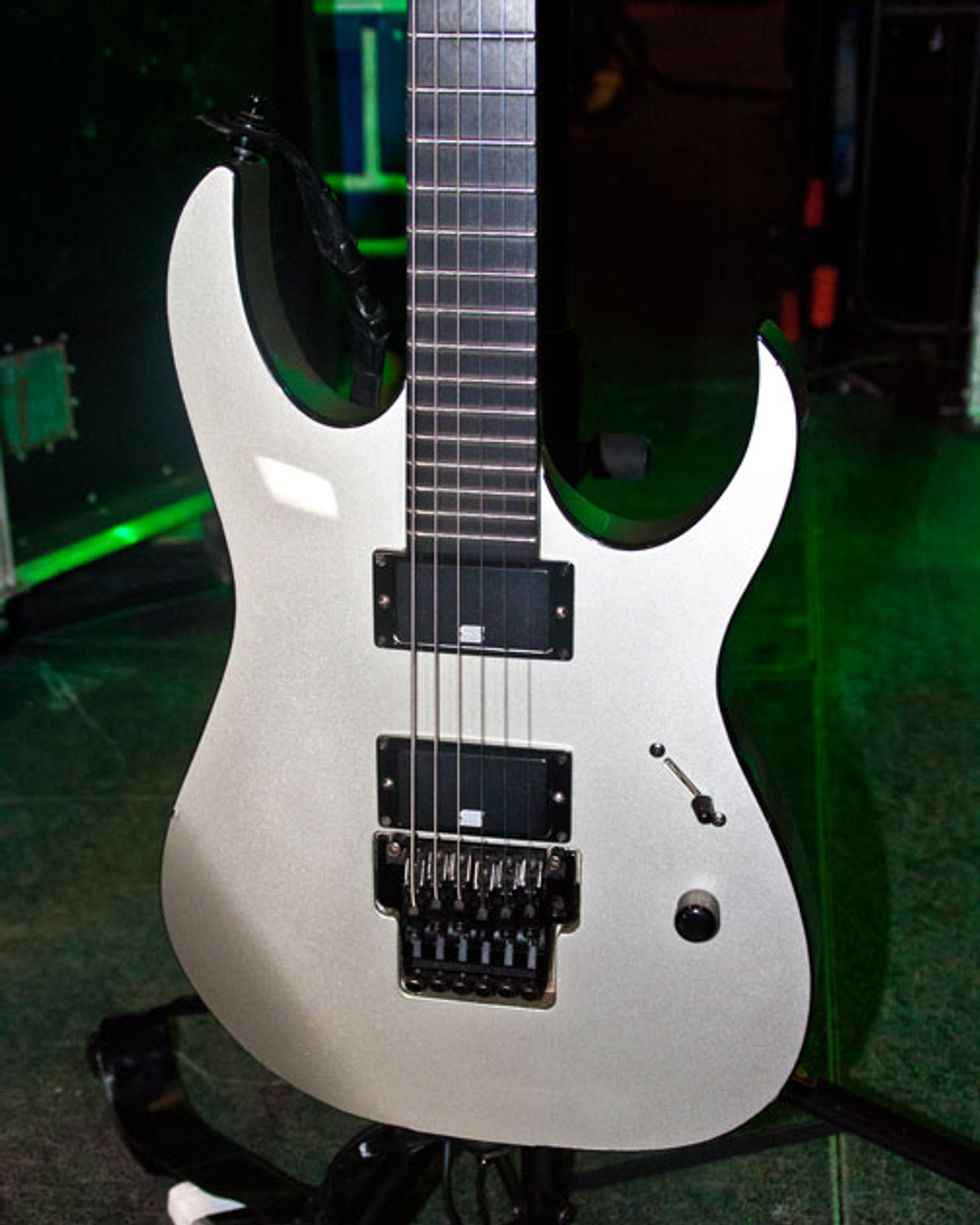
Thomson starts the night out with this Oakland Raiders-themed Ibanez MTM that’s tuned to dropped-A for “Sacrastrophe.”
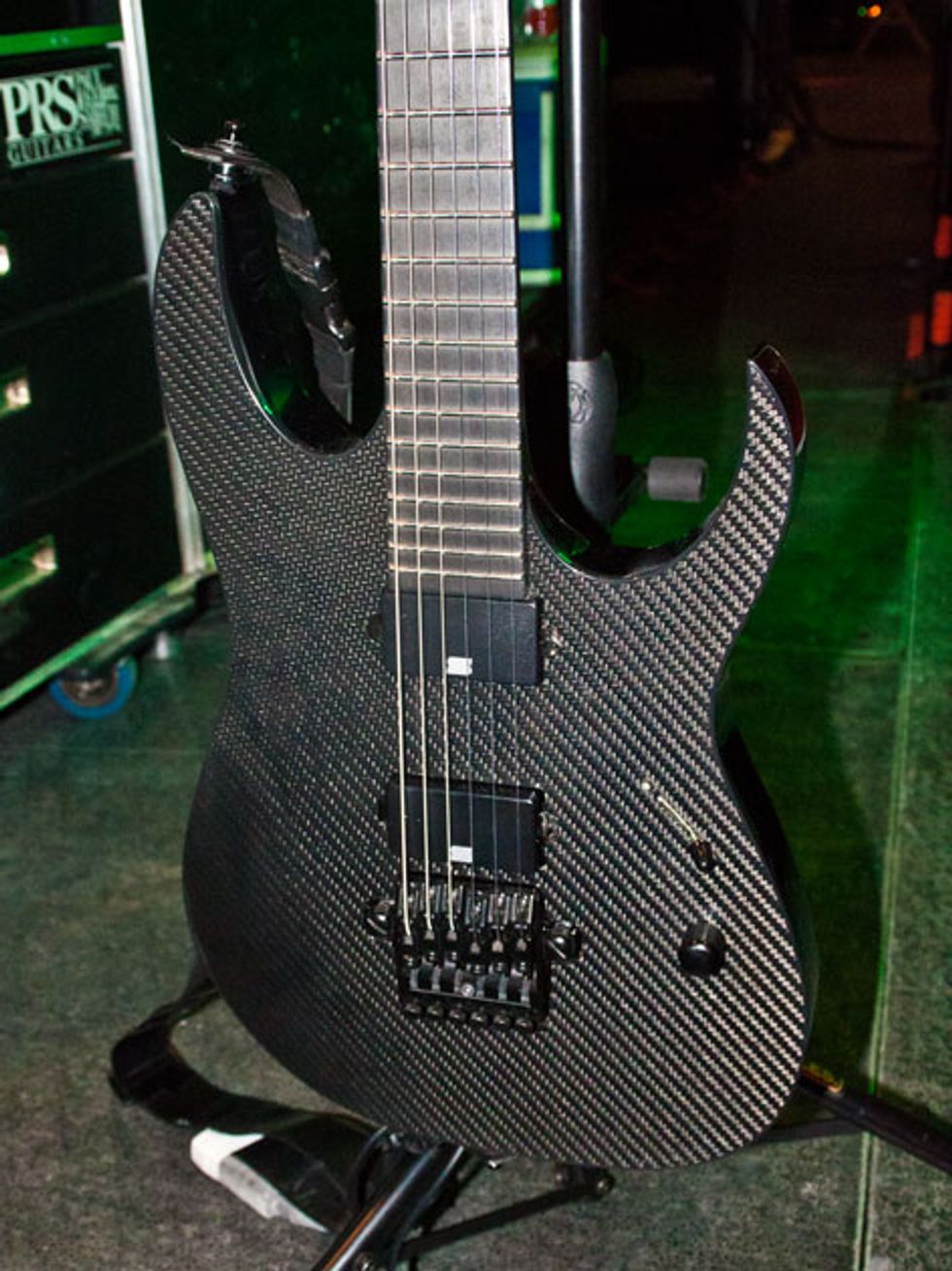
Thomson’s newest signature model features a carbon-fiber cap on the body and headstock and is tuned to dropped-A.
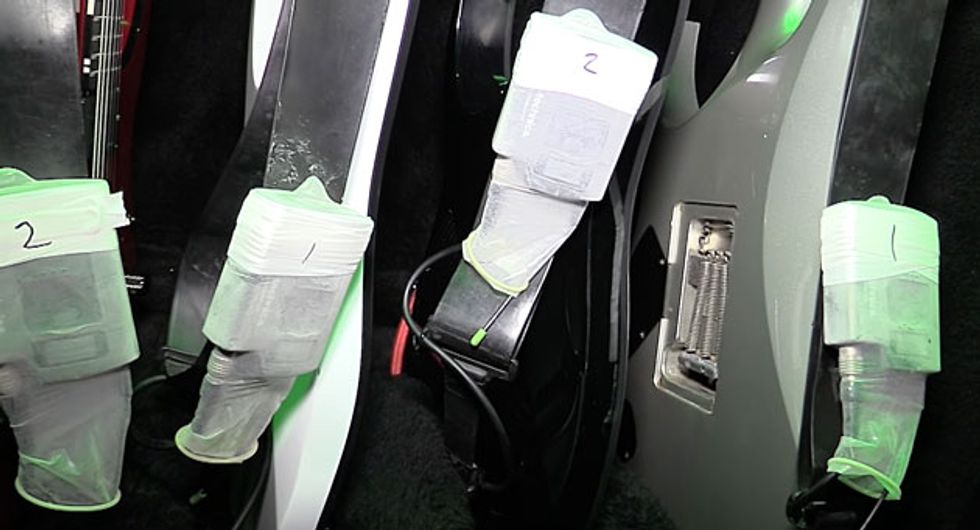
All of Thomson’s Audio-Technica wireless packs on his guitars are protected by Trojan condoms to keep them from getting wet from water, beer, sweat, and blood.
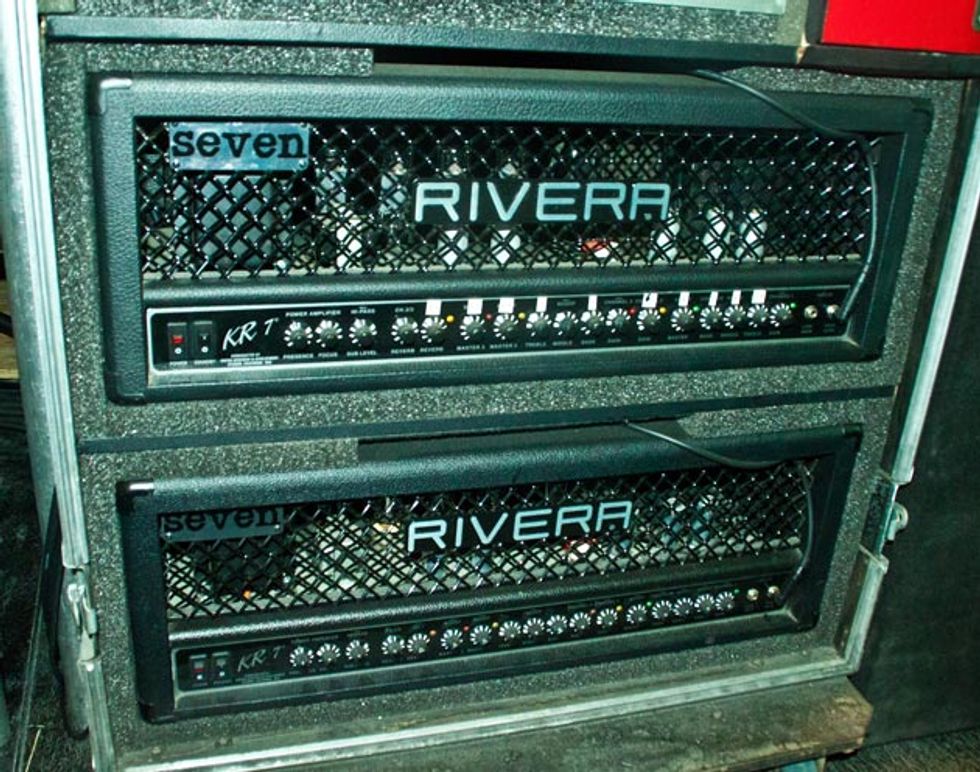
Much like his guitars, Mick rocks only the gear with his name on it—for this tour, he’s been using two Rivera KR-7 heads. One head goes to front of house and the second head runs through a 1x12 iso cabinet with a Celestion G-12K-100 because it meshes well with the third channel of the KR-7 and allows more headroom giving more clarity to the drop-tuned notes.
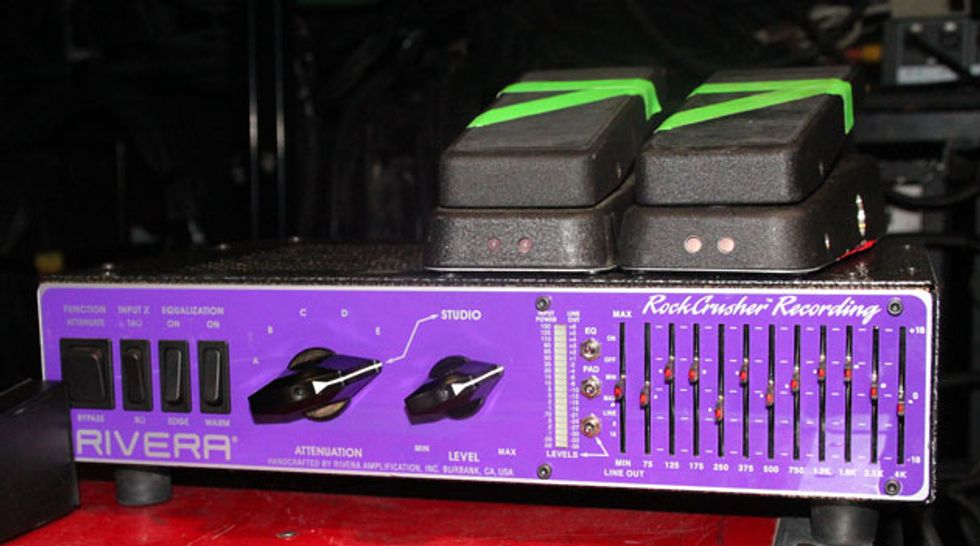
The secret weapon of his amp setup is the Rivera RockCrusher because he runs the FOH signal through the unit allowing him and his tech to color and dial in the sound from room to room or venue to venue. In addition, the RockCrusher can emulate most speakers on the market making it an invaluable tool for Mick in the studio.
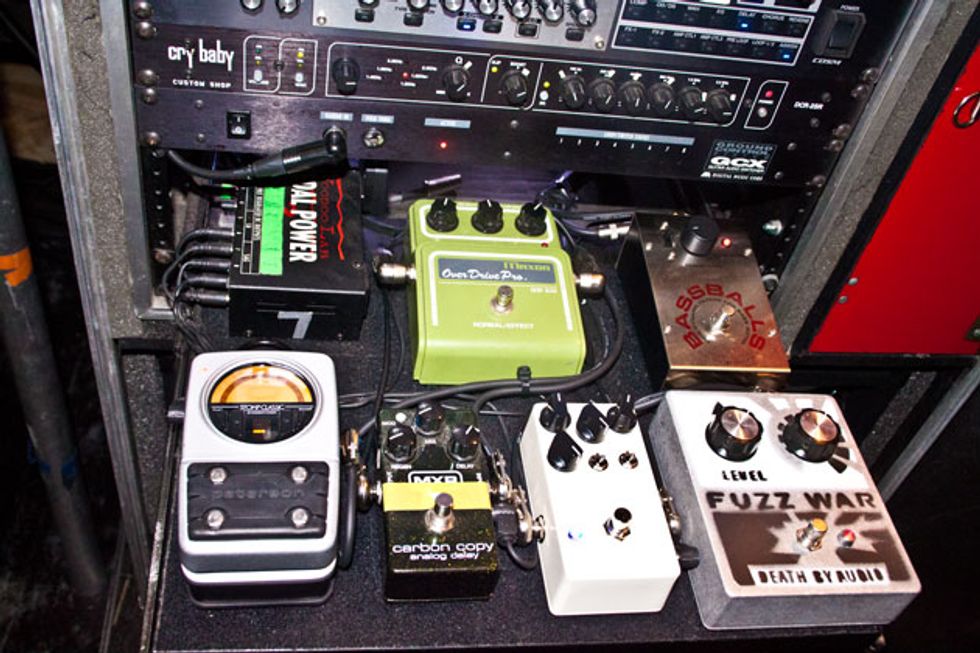
Thomson’s rack of effects is slim—but utilitarian. He only uses six effects plus a Voodoo Lab Pedal Power ISO-5 and Peterson Stomp Classic tuner. His noisemakers include a Maxon OD-820 Overdrive Pro for lead boosts, an Electro-Harmonix Bassballs that’s kicked on for “Disasterpiece,” an MXR Carbon Copy Delay for parts of “Vermillion,” a Death By Audio Fuzz War, and a custom-made octave fuzz created by Thomson’s tech Kevin Allen. Mick commissioned his tech to make the filthiest, gnarliest, most obnoxious-sounding fuzzbox possible because as the guitarist sees it, “the fuzz better fuck your sound up.” He uses the custom octave fuzz on parts of “Duality.”
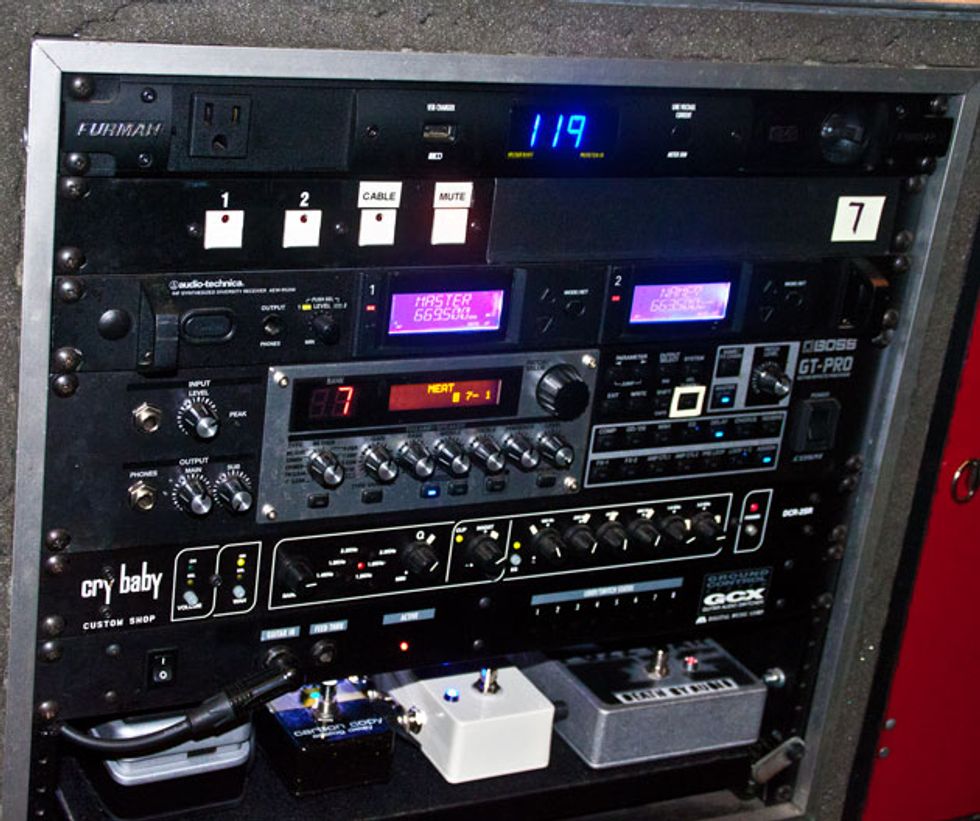
His rackmounted gear includes Audio-Technica wireless units, a Furman power conditioner, a Boss GT-Pro, and a Dunlop Custom Shop DCR-2SR Cry Baby Rack Wah. Thomson uses the GT-Pro to mimic the vocal sounds he originally recorded on tracks like “Spit It Out,” “Surfacing,” “Prosthetics,” and others off their 1999 self-titled debut. He switched to the GT-Pro from the Boss GX-700 during the recording of All Hope is Gone because of the updated algorithms, added MIDI capabilities, and to preserve the 700’s life.

Tech Kevin Allen uses a Voodoo Lab Ground Control Pro backstage to do all of Thomson’s switching throughout a show.

Like his 6-string counterpart, Jim Root uses various body stylings of his signature Fender guitars that feature mahogany bodies, maple necks, rosewood fretboards—ebony for his Jazzmasters—single volume knob, and EMG pickups. All of his axes are equipped with Dunlop .011–.056 strings for dropped-A and .012–.058 for dropped-B tunings. And for guitar picks, #4 recently collaborated with Dunlop to customize a Jazz III nylon pick that is the shape of a Tortex III pick.
His newest signature guitar is a sandblasted Jazzmaster that he recently created with Fender. The company describes the process as “leaving the surface grain pattern wonderfully textured with parallel ruts and grooves in which the black grain-filler coat shows beneath the color finish coat.” Root commented that he feels the removal of some of the wood makes this particular Jazzmaster more resonant. This sig offset has an EMG 81 in the bridge and a 60 in the neck.
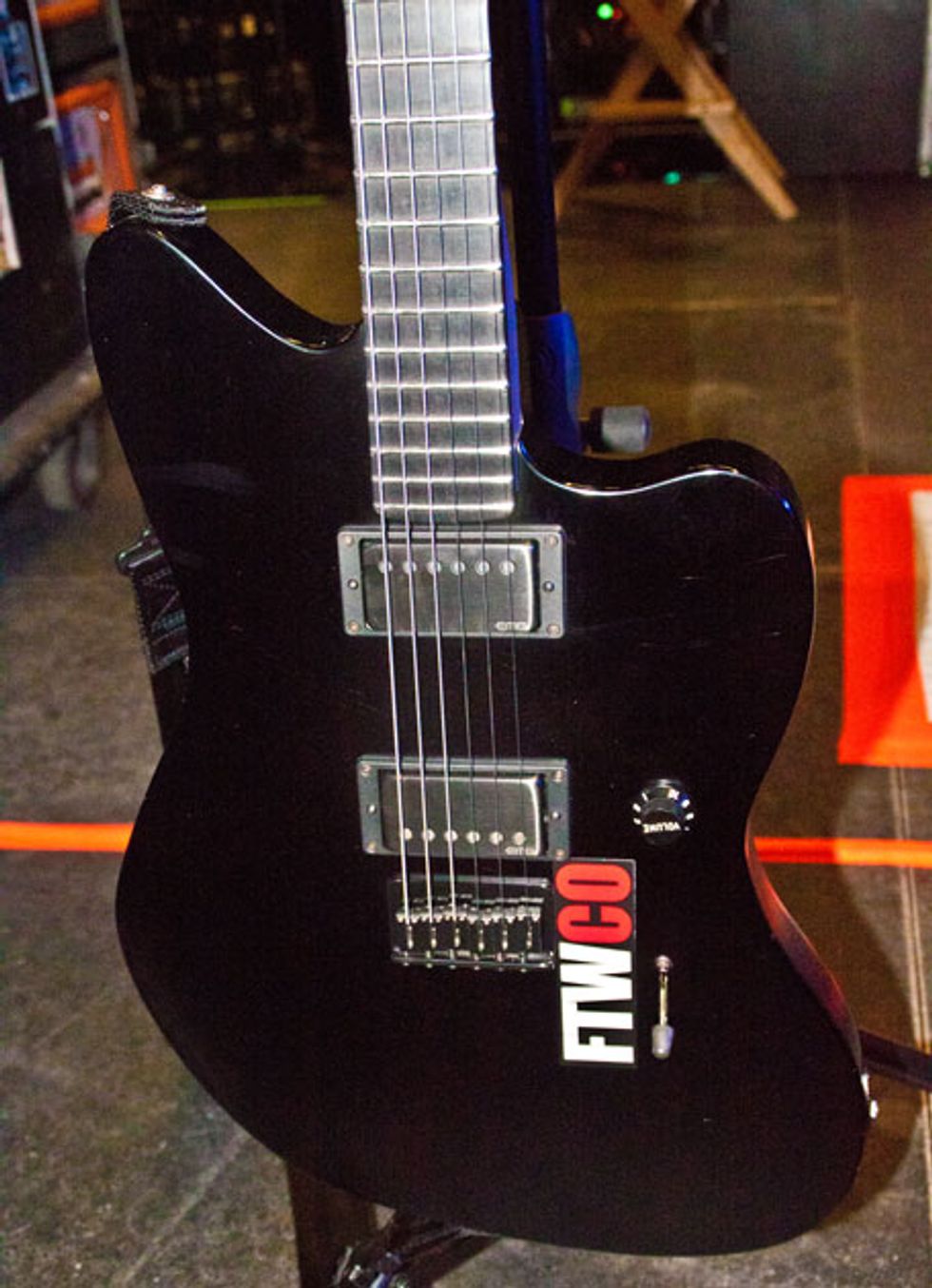
This signature model Jazzmaster is a flat-black model that is loaded with the EMG JH Het Set pickups that Root feels has more headroom and offers a more “rounder” saturation than the standard 81-60 pairing.
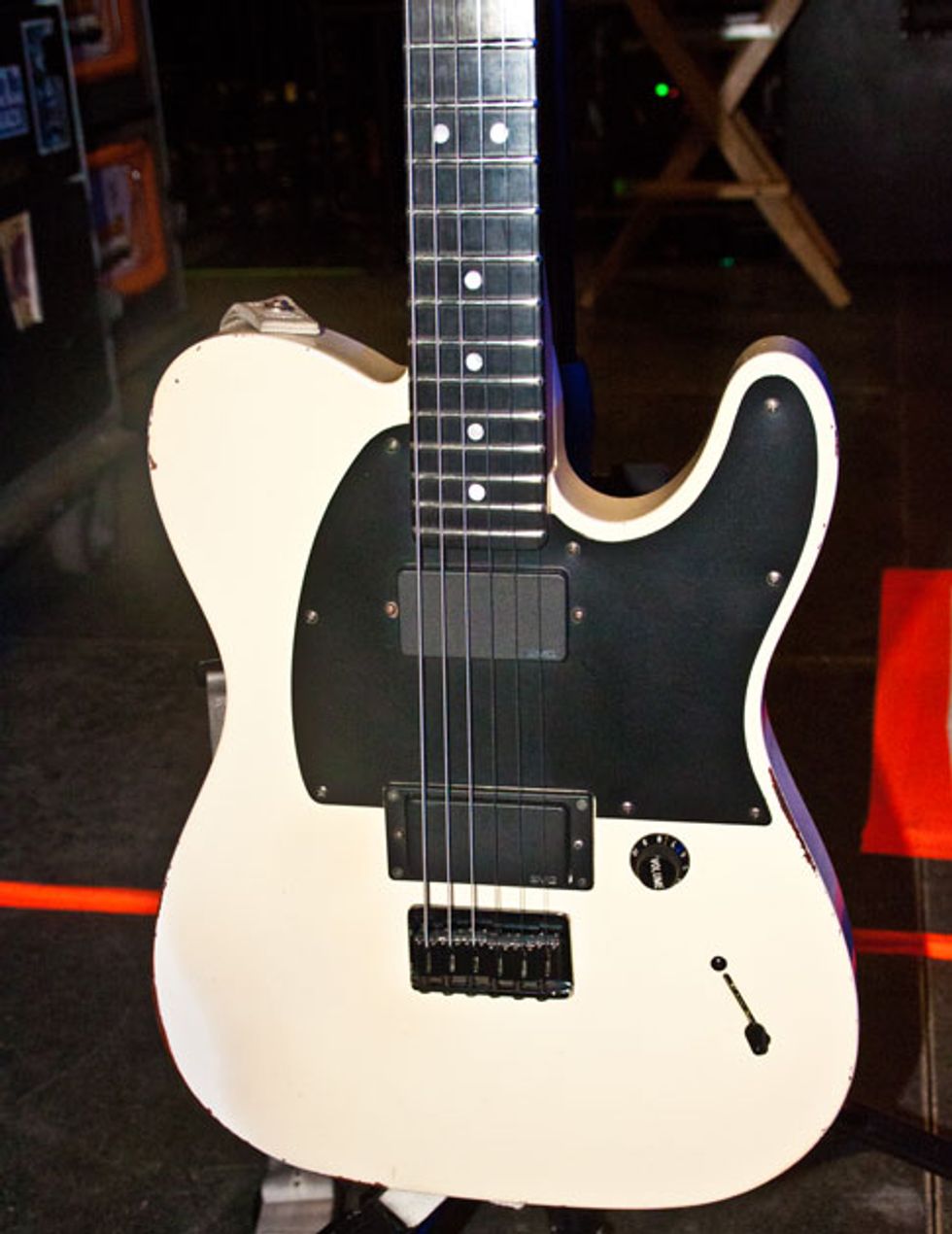
Jim’s favorite stage guitar has been his first signature Tele that was conceptualized with Fender in the early 2000s. The dual-humbucker, mahogany-bodied Telecaster has been used on every album and every tour since he received it nearly 10 years ago. Root hopes to convince Fender to do a limited run of relic’d copies of this guitar in the future.

His lone signature Strat has a matte silver finish with a patina copper pickguard. He currently uses this one the least because it is extra bright.
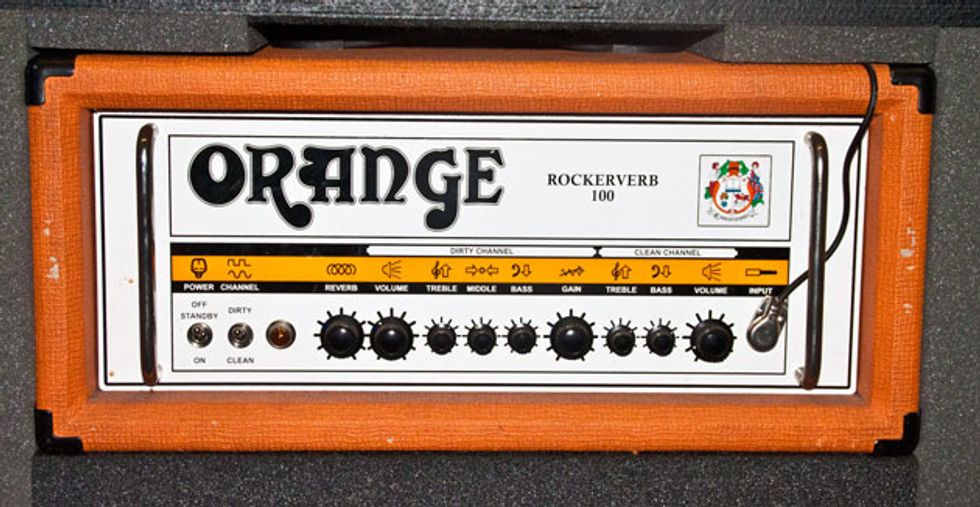
While he does a have a signature Orange head—#4 Jim Root Terror—he’s currently using a pair of Rockerverbs for his live sound. His main live amp is a Rockerverb 100 that runs into an isolated Orange 4x12 cab loaded with Celestion Vintage 30s that is close-mic’d with three Audio-Technica AT4050s.
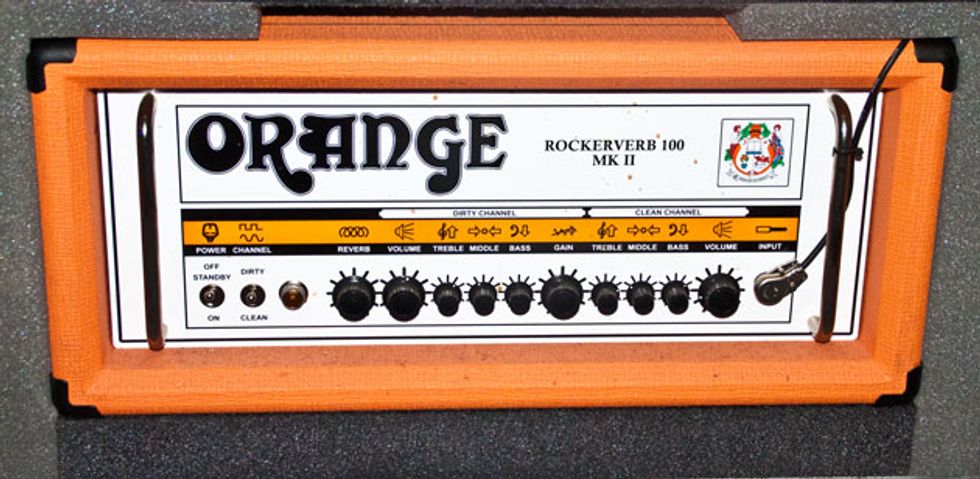
His backup head is a Rockerverb 100 MKII.
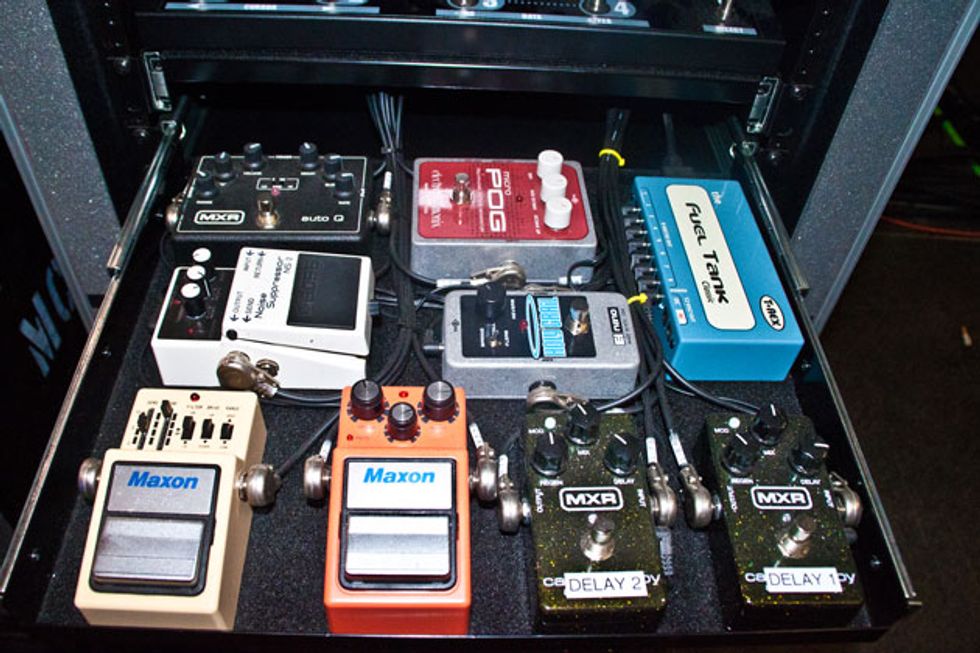
Root’s batch of effects are fairly simple and straightforward as he has an old Boss NS-2 Noise Suppressor—he claims the updated circuitry and lead-free solder in the new versions are less desirable and impact his sound too much—an MXR Auto Q Wah, a Maxon AF-9 Auto Filter, a Maxon PT-9 Pro+ Phase Shifter, two MXR Carbon Copy Delays—each is set with varying decay and repeat lengths—an Electro-Harmonix Holy Grail Reverb, and an Electro-Harmonix Micro POG. A T-Rex FuelTank Classic powers his stomps.
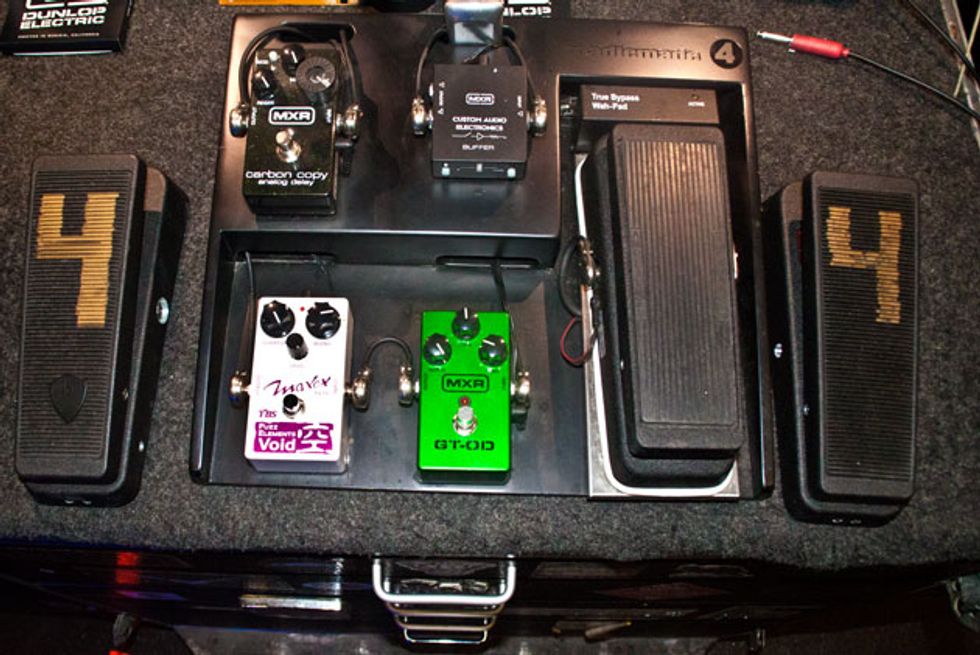
His satellite board that sits out front onstage includes a Cry Baby controller for the rack-mounted wah, a third MXR Carbon Copy so he can create oscillating chaos, a Maxon FV10 Fuzz Elements Void, an MXR GT-OD for a backup dirt box, and a Dunlop JH1D Jimi Hendrix Signature Wah. He feels the Hendrix wah has a different vibe that is a bit more traditional sounding effect that harkens back to the earliest Vox models. The Hendrix wah sits on a G-Lab True Bypass Wah-Pad that allows Root to leave the wah half-cocked without having to ride the foot pedal.




![Rig Rundown: Russian Circles’ Mike Sullivan [2025]](https://www.premierguitar.com/media-library/youtube.jpg?id=62303631&width=1245&height=700&quality=70&coordinates=0%2C0%2C0%2C0)




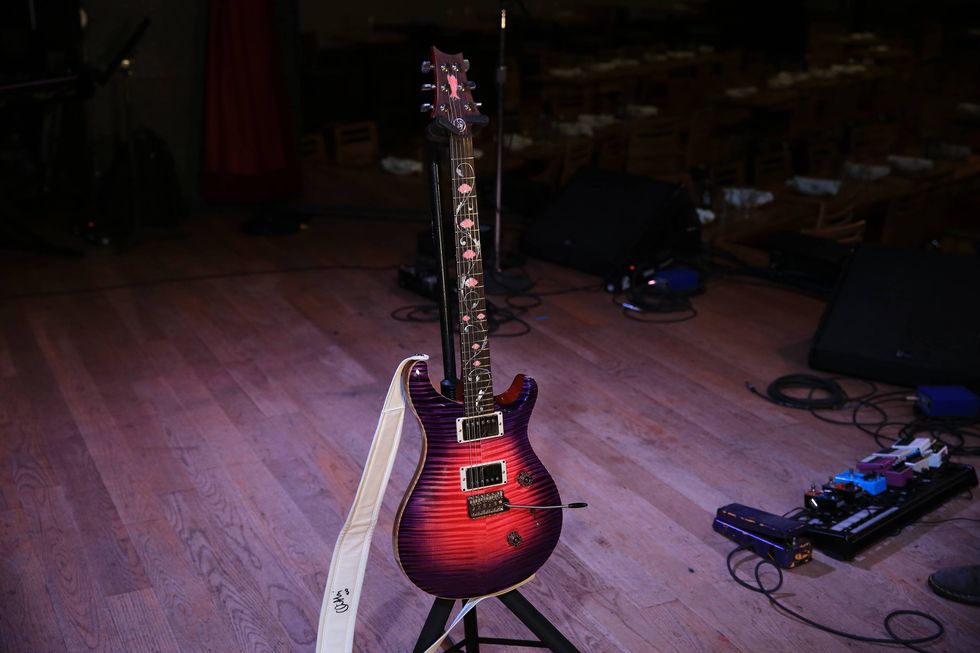
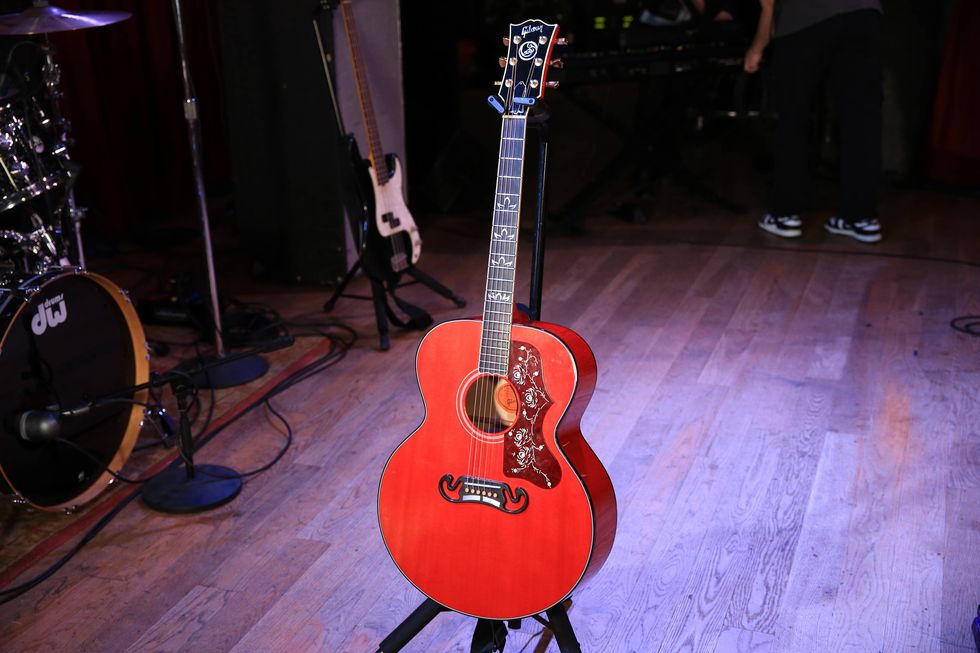
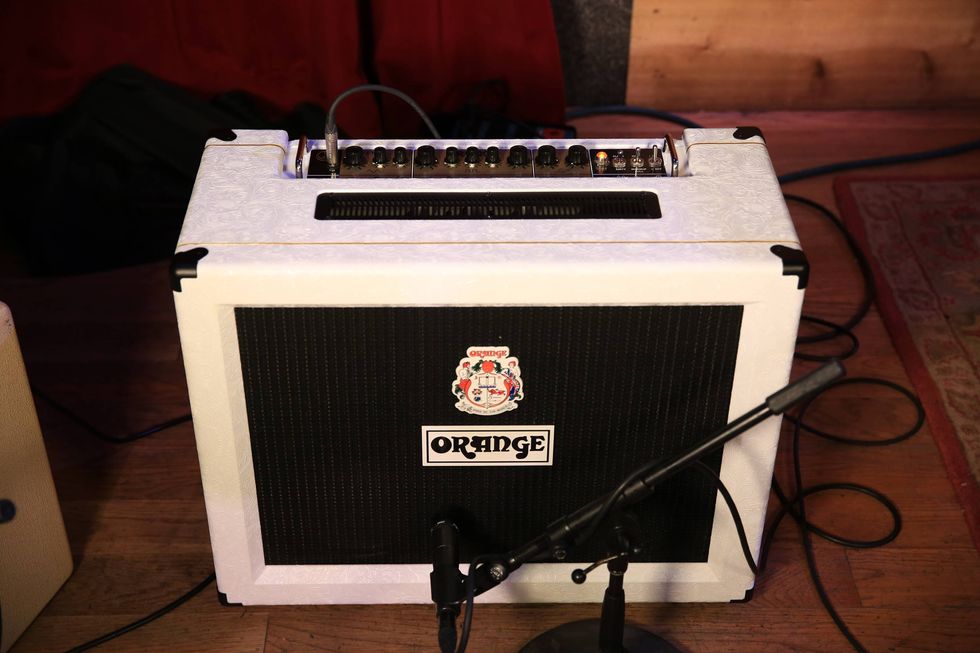
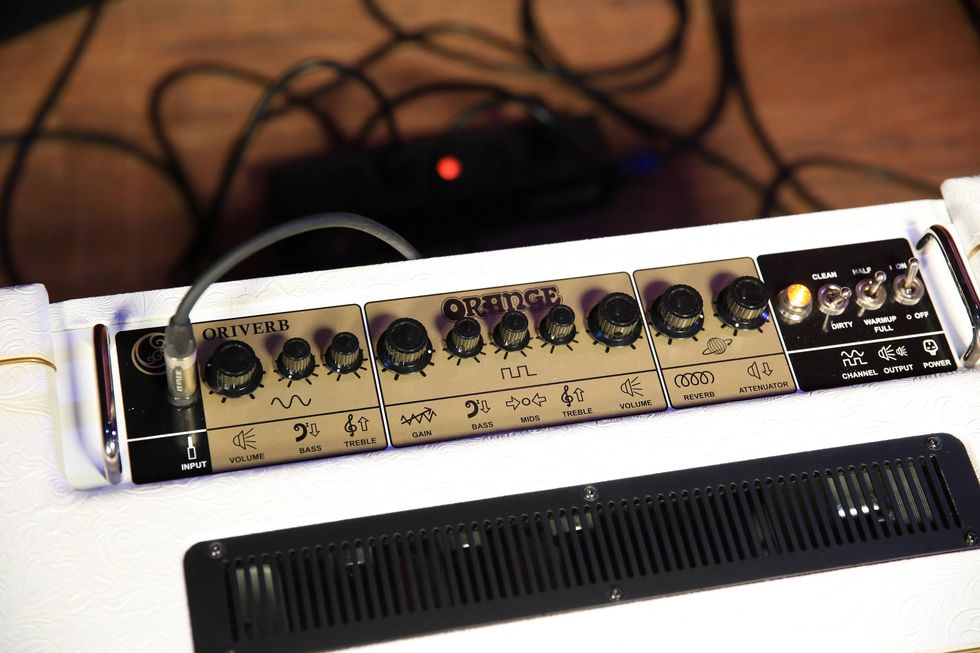
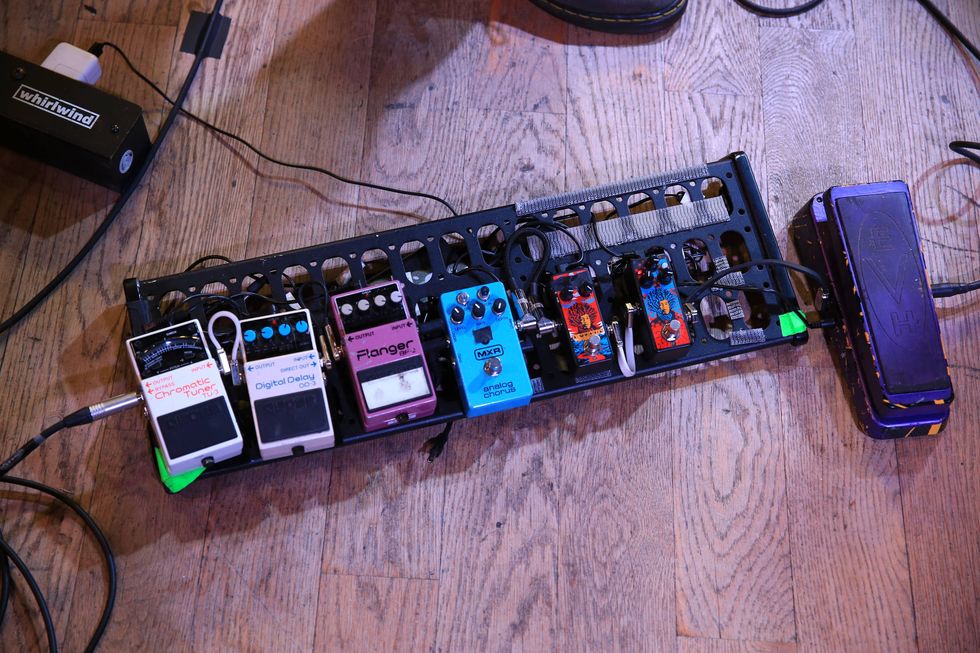







![Rig Rundown: AFI [2025]](https://www.premierguitar.com/media-library/youtube.jpg?id=62064741&width=1245&height=700&quality=70&coordinates=0%2C0%2C0%2C0)












 Shop Scott's Rig
Shop Scott's Rig







 Zach loves his Sovtek Mig 60 head, which he plays through a cab he built himself at a pipe-organ shop in Denver. Every glue joint is lined with thin leather for maximum air tightness, and it’s stocked with Celestion G12M Greenback speakers.
Zach loves his Sovtek Mig 60 head, which he plays through a cab he built himself at a pipe-organ shop in Denver. Every glue joint is lined with thin leather for maximum air tightness, and it’s stocked with Celestion G12M Greenback speakers.







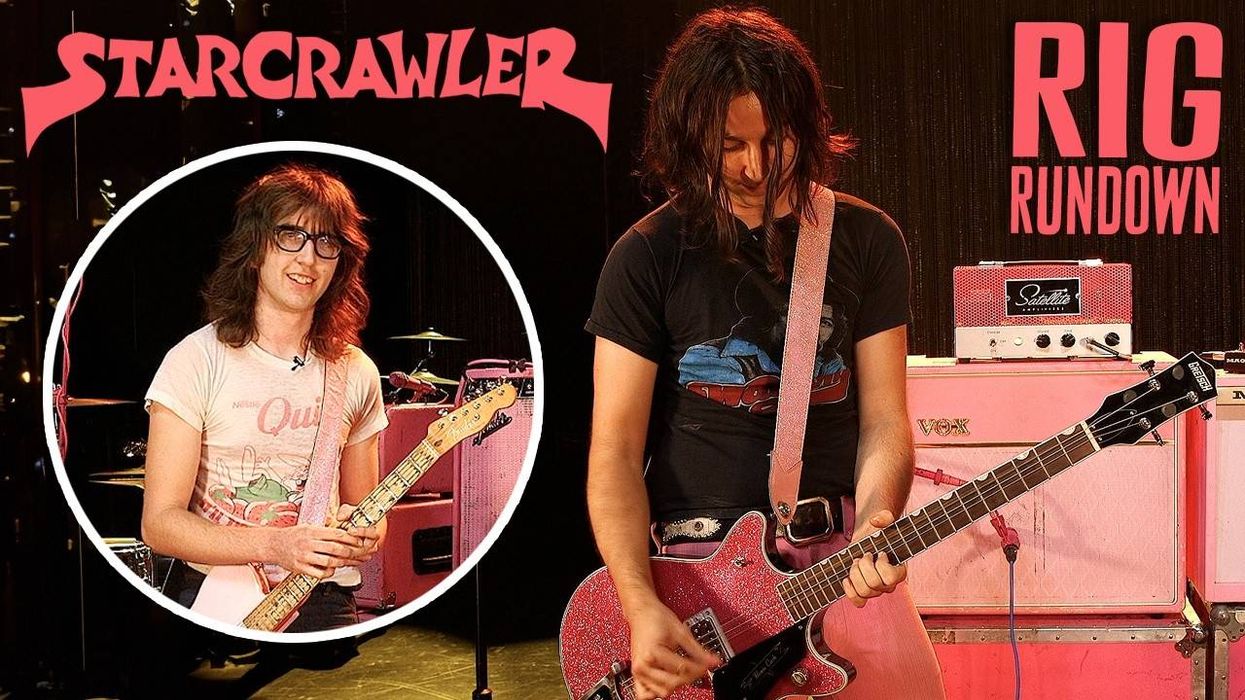
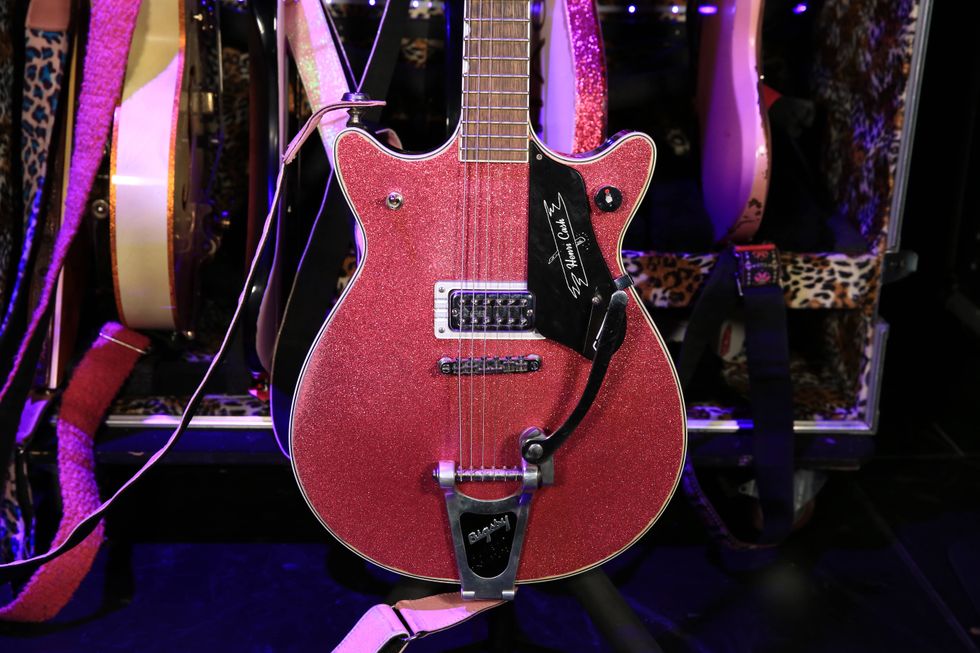
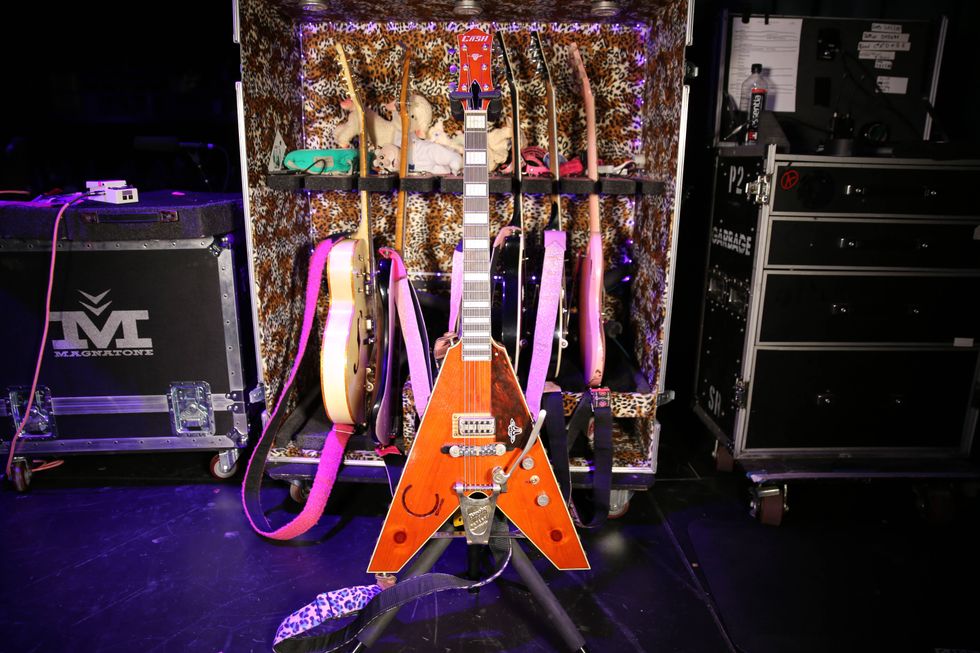
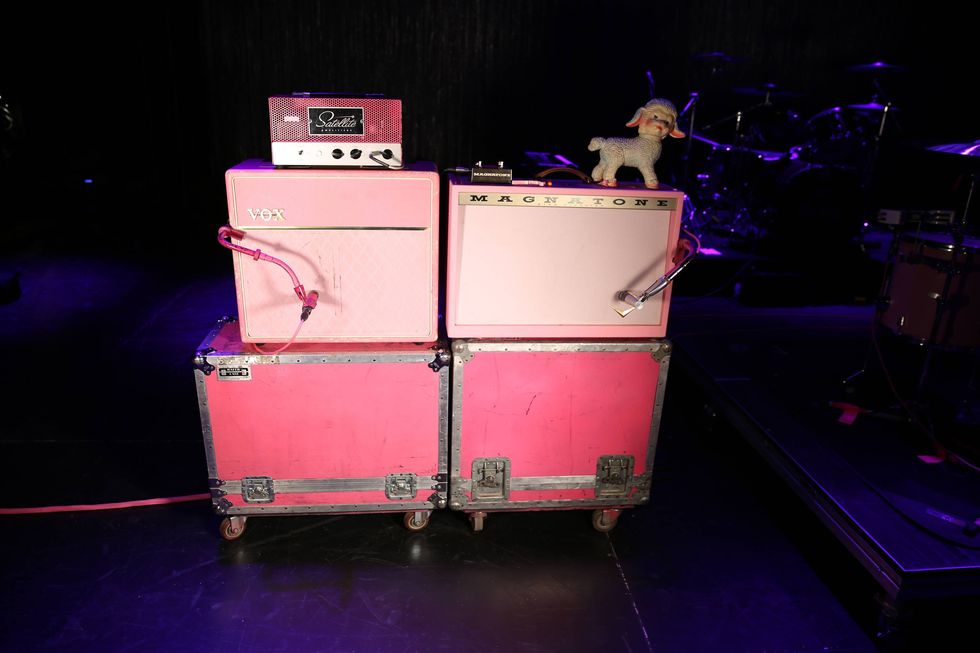
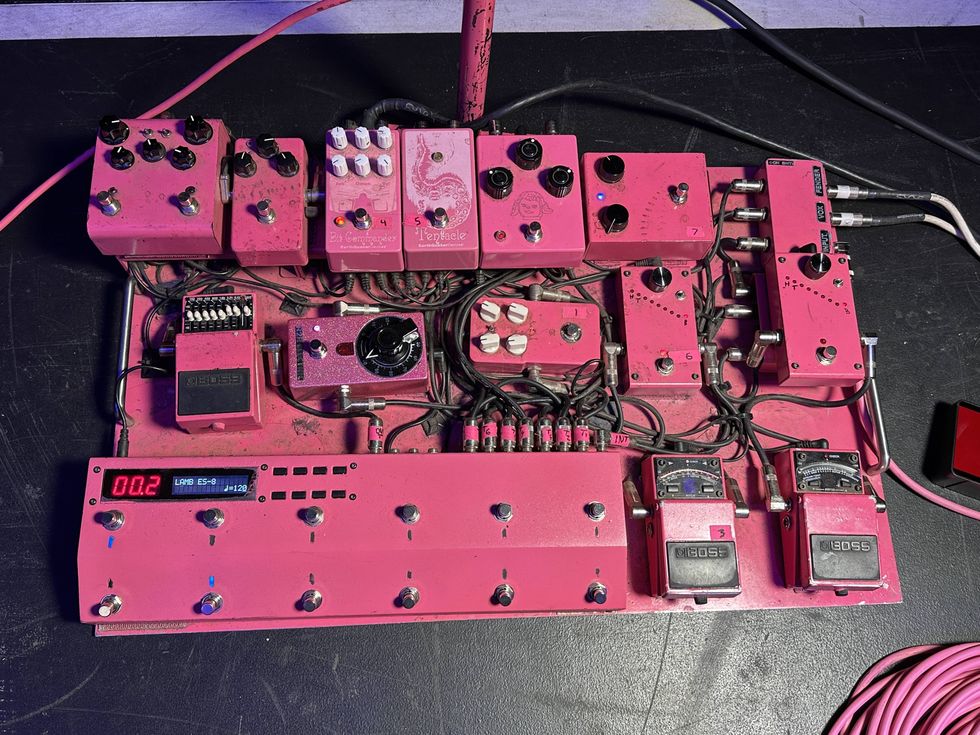
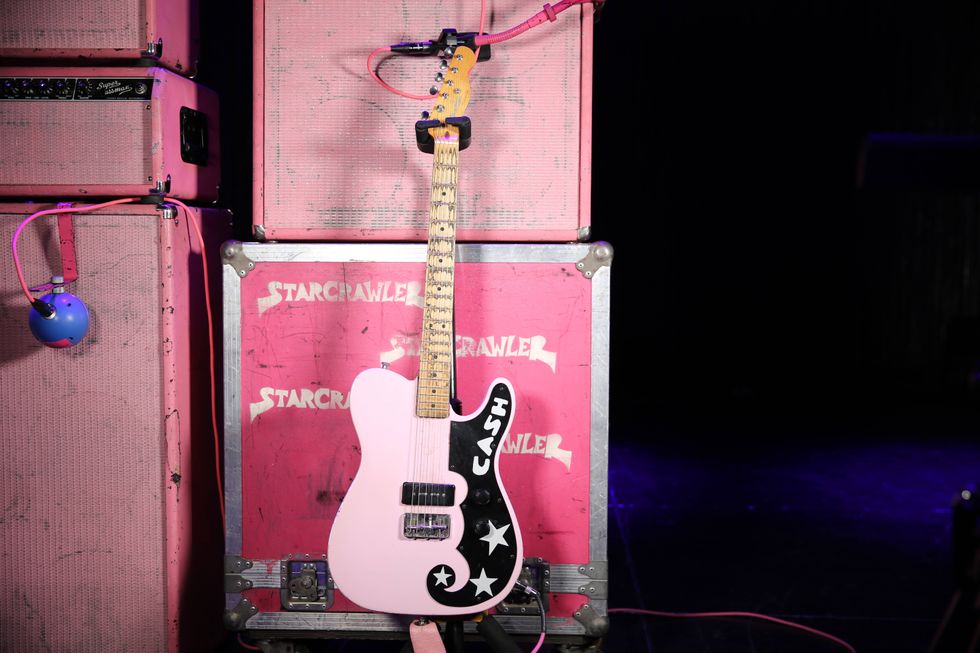
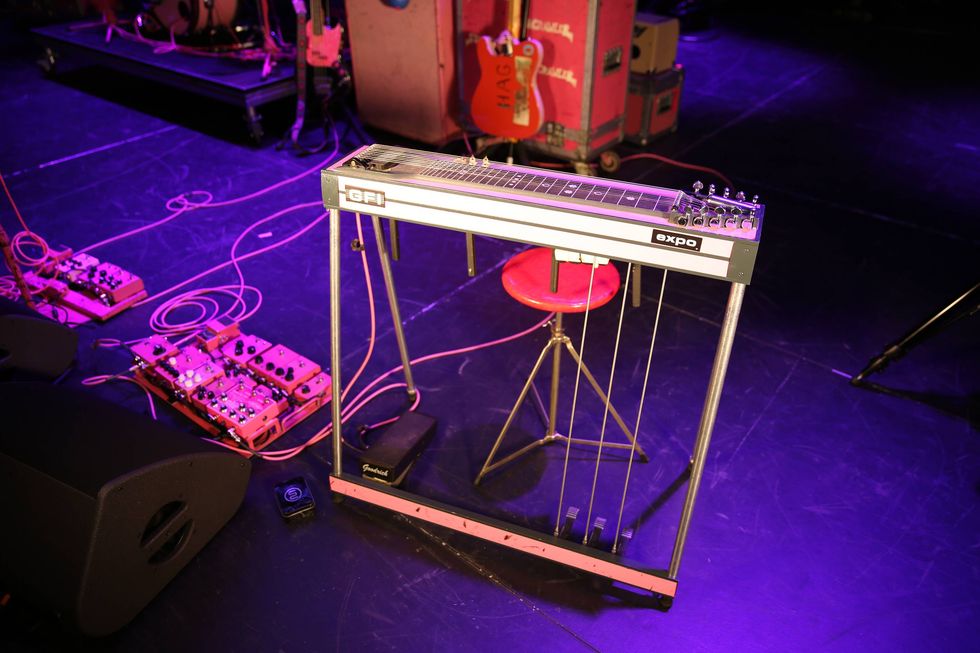
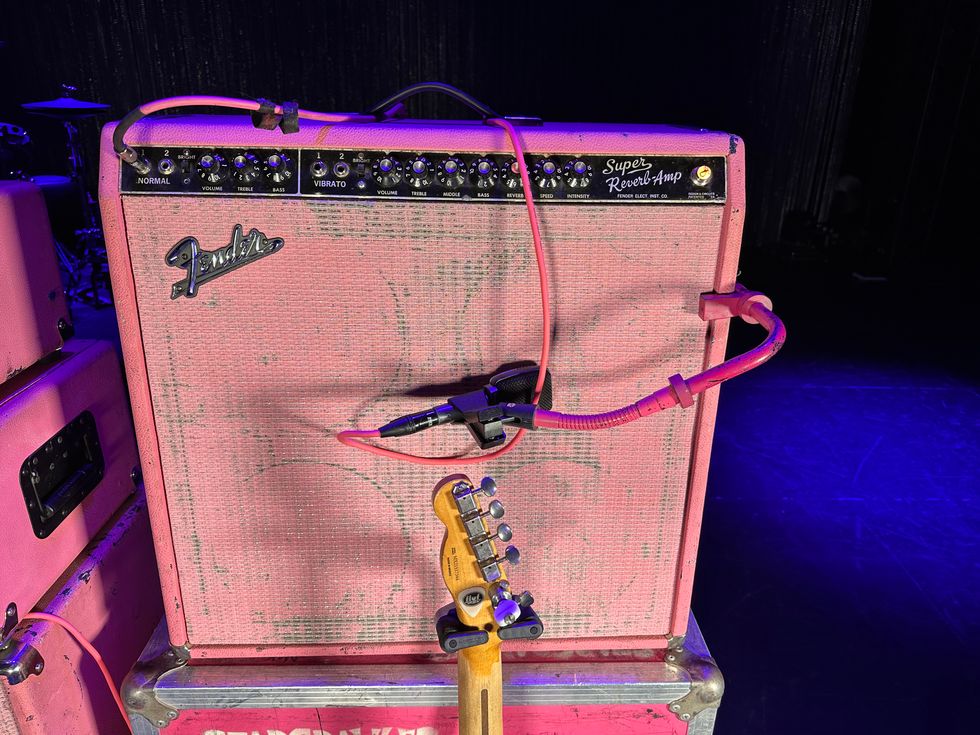
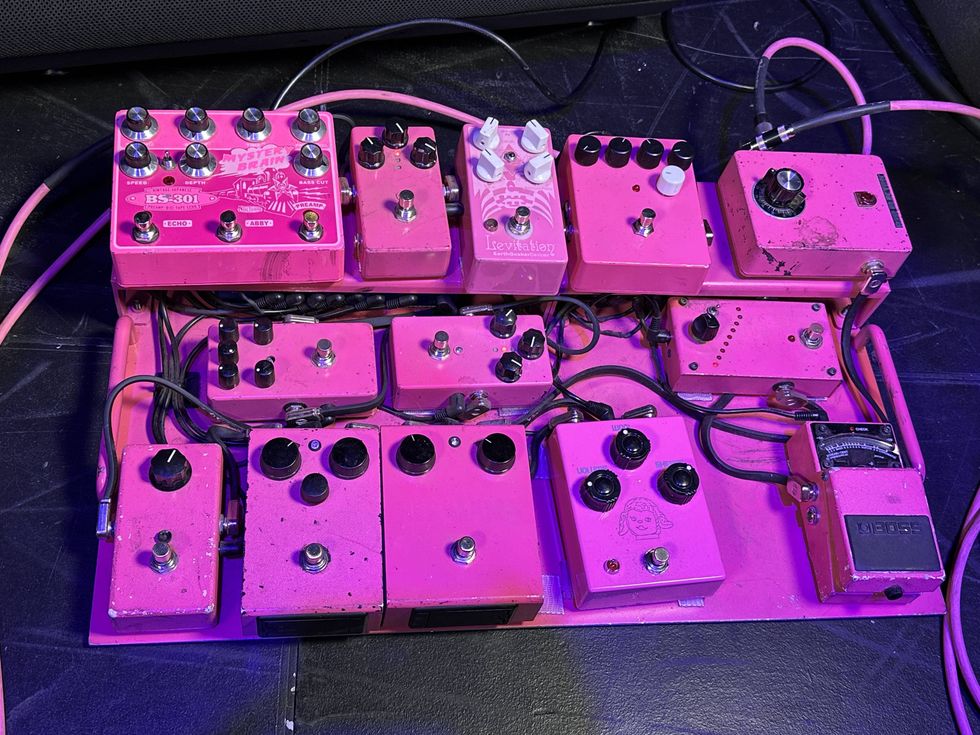

![Devon Eisenbarger [Katy Perry] Rig Rundown](https://www.premierguitar.com/media-library/youtube.jpg?id=61774583&width=1245&height=700&quality=70&coordinates=0%2C0%2C0%2C0)






